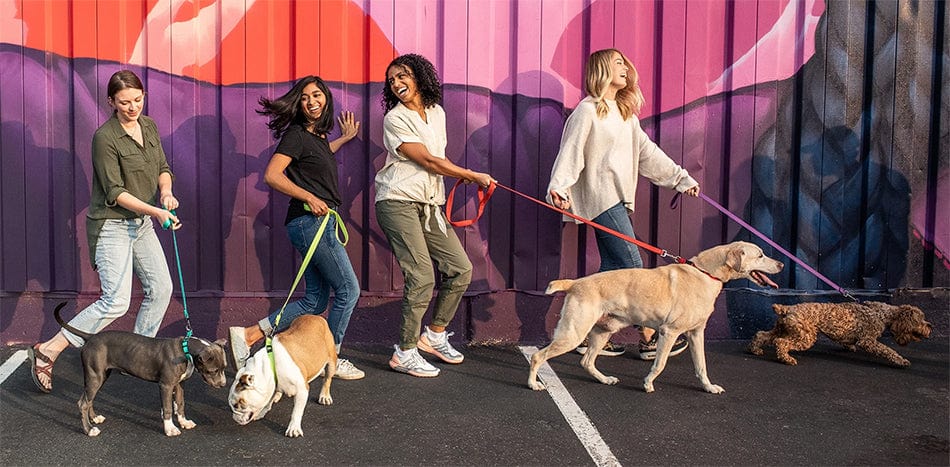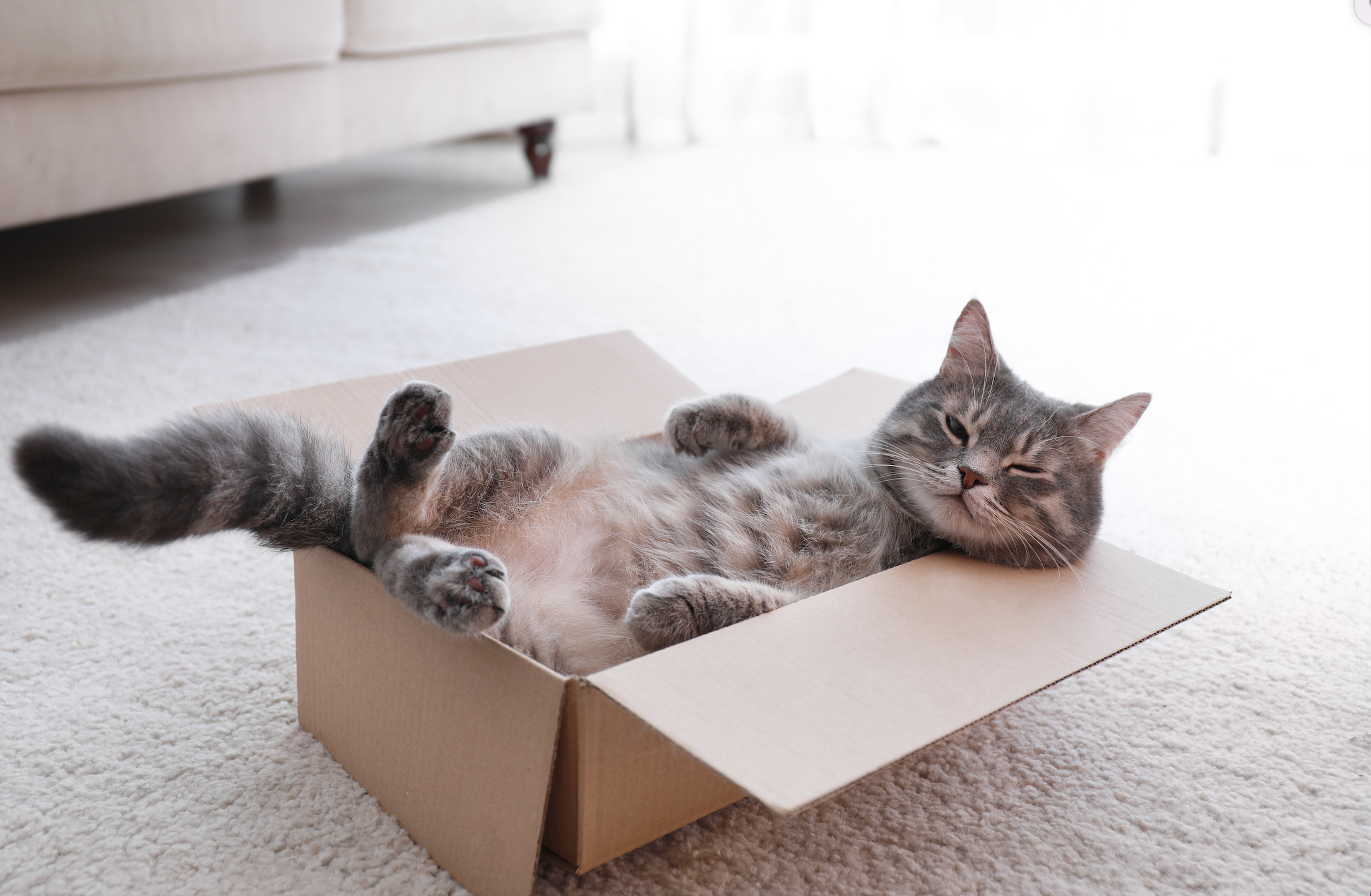Your cart is empty. Let's fix that!


Cats have been our companions for thousands of years. From mouse catchers to post office employees to cuddly lap cats, they’ve truly done it all! Welcome to the amazing history of the household cat.
A study comparing the genetics of 79 modern domestic cats with their wild relatives shows that all of today’s modern cats trace their ancestry back to one common ancestor: Felis silvestris, A.K.A. the “cat of the woods.”
It also shows that their domestication process started about 12,000 years ago—2,500 years earlier than previously thought—in the Fertile Crescent region of the Middle East. As humans settled down and started farming, those grain stores attracted lots of hungry mice. The wild cats of the region followed (hello, food security), and humans quickly realized the benefits of keeping those mouse hunters around.
The bond between human and cat strengthened over the years, as shown by the oldest known archaeological evidence of the human-feline relationship. A 9,500 year old burial site on the Middle Eastern island of Cyprus revealed the bones of an adult human and a cat each curled up and buried side by side.
This proves two things: first, ancient people valued cats enough to bring them across the sea to an island they never could have reached on their own; and second, their bond was close enough that they wanted to be together even after death.
Cats were domesticated twice! Genetic analysis of small cat bones found in three ancient Chinese farming settlements show that the locals were living alongside leopard cats (Prionailurus bengalensis). This relationship spanned hundreds of years and researchers believe these cats were likely domesticated. Unfortunately, this lineage didn’t last, and all of today’s domestic cats across the globe are descendants of Felis silvestris—except for when leopard cats were crossbred with modern domestic cats in 1963 to produce the Bengal breed.
A painting on the walls of a Fifth Dynasty tomb at Saqqara in Egypt shows what appears to be a small African wildcat (Felis lybica) wearing a golden collar. This is the earliest evidence of ancient Egyptians trying to keep cats as pets, but the wildcats remained exotic attractions kept by royalty. Egyptians’ love for cats really took off as soon as domesticated cats migrated over from the Middle East, leading to thousands of years of Egyptian cats thriving as hunters, jewelry-adorned pets, and revered gods.
Domestic cats made the leap from Africa to Europe when Egypt was taken over by the Roman Empire in 31 BCE. They quickly spread across the continent, but suffered from a very mixed reputation by the time the Middle Ages rolled around.
On the one hand, they must have enjoyed some devoted human companionship, because genetic research shows that this is the first period in history when humans intentionally bred cats for different fur colors. On the other hand, cats were falsely accused of a wealth of sins, from being agents of the devil to spreading the Black Plague. (Little did people know how much cats helped to cut down on rat populations!)
As European colonizers brought their ships to the Americas, they brought cats with them. Cats were essential for pest control on sailing ships where food stores were a precious commodity, and they proved just as useful in the New World. Spanish conquistadors purposefully imported cats to Puerto Rico to handle the island’s rat problem, and legend has it that cats landed in North America with Columbus’s ships.
In 1868, three cats were made official employees of the London post office with a salary of one shilling a week (to be used for their care). They were probationary hires, given a period of six months to make a dent in the Money Order Office’s mouse problem. They were so effective that they were all kept on and the program spread to other offices. The post office cats received a well-deserved sixpence per week raise in 1873.
In 1871, cats made the leap from popular pet to competitor when the world’s first cat show was held in London’s Crystal Palace. Just 65 cats competed in the first show, but it went on to become a hugely successful annual event attracting hundreds of contestants. The popularity quickly spread as cat shows began popping up around the globe.
Up until the 1950s, pet cats were almost always outdoor cats. It was difficult for house cats to be fully indoor pets because there was no great solution to handling their excrement. Some cat owners used boxes filled with dirt or sand as an indoor potty, but they were messy and had cats tracking dirt all over the house.
All that changed in January of 1947 when Ed Lowe gave his neighbor a bag of mineral clay to use in her cat’s litter box after her sand pile froze over. Kitty litter was born, and he traveled the country promoting his product until he finally introduced Tidy Cat litter to the market in 1964.
People still wish they could stay with their cats after death, just like our ancestors did—but now science can make that a very real possibility. The domestic cat became the first successfully cloned pet in December of 2001 when a surrogate mother named Allie gave birth to baby CC (short for “CopyCat” or “Carbon Copy”), who was a clone of her genetic donor, Rainbow.
CC was interestingly a brown and white tabby unlike her calico donor due to epigenetic changes while she was in the womb. She became a well-loved pet cat who went on to have her own healthy kittens later in life—which marked a huge breakthrough in the field of cloning. CC passed away in 2020 at the ripe old age of 18.
Cats gained the attention of the United States federal government in a whole new way when a group of 15 cats served as the defendant in a case put in front of the Supreme Court of South Dakota.
When a woman reversed her car out of a parking space and nearly hit a police car in 2009, officers quickly identified the 15 cats in the car as the problem for obstructing her view. They confiscated the cats, and their owner took the case to get her cats back all the way to the state’s Supreme Court in 2010. The cats ultimately lost the case, as the Court ruled their confiscation was the best move for the safety of both the public and the cats themselves.
Cats have been a part of human civilization for thousands of years, and our feline friends will probably be keeping our laps warm and our barns pest-free for thousands more. While the jury’s still out on whether cats are truly domesticated, we’d argue that they’ve thoroughly domesticated us—but we don’t mind at all. So break out the treats or crack open a can of something tasty to celebrate the greatest cat around: your own.
P.S. Want to learn about the history of dogs too? We’ve got you covered—we don’t play favorites.